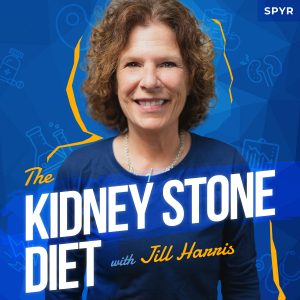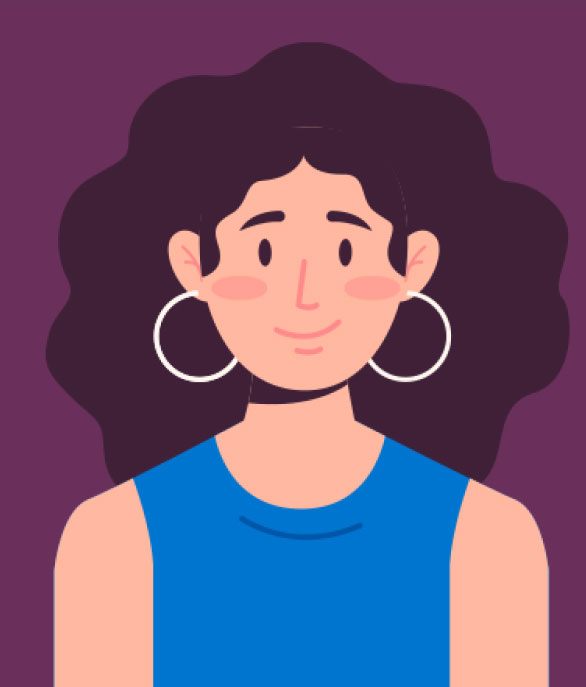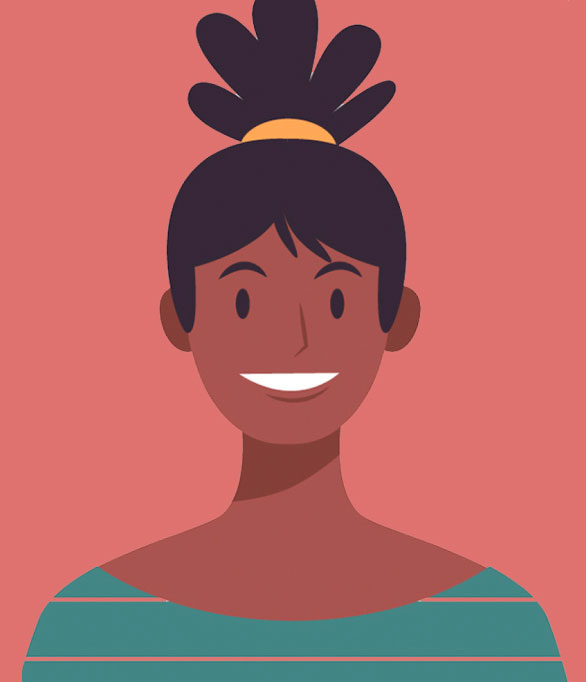This week, Jill talks about oxalate.
Jeff Sarris: Welcome back to the Kidney Stone Diet podcast, the show about reducing your kidney stone risk and living your best life. I’m your host, and fellow student, Jeff Sarris.
Jill Harris: I’m Jill Harris, your kidney stone prevention nurse.
Jeff Sarris: I just realized why my sound was so different. My headphones weren’t in all the way. I was like, “Why do I sound so much more echoey?” I just popped them over my ears, but yeah, how are you doing today? We’re back remote.
Jill Harris: Yes, it’s not the same. It was so much fun.
Jeff Sarris: Yeah, it was so fun to have you here. And now you have more context for where I’m at, like in this room, because I’m just turned a little bit over here. But, yeah, it was so much fun.
Finding Happiness & Joy in the Little Things
Jill Harris: And I liked having Amara there, too! We’re gonna have to do it more because, I mean, I’ll just drive and we’ll we’ll do it. You know, it’s so much fun. Look, we’re enjoying the last–it’s August 24–and we’re enjoying the last, you know, few whiffs of summer smells. You know, in the morning, when I’m walking Finn, there’s a little bit of a “Oh, I smell some fall coming at us.” So, it’s interesting.
Jeff Sarris: Isn’t that weird? You just feel it, too. There’s something about the air, like the quality. I don’t know if it’s the whole negative, positive ions sort of shift, but there’s something different.
Jill Harris: Something very different, but I just love fall. I just love everything about it. I’m into sweater weather, I’m into pumpkin spice lattes–no sugar added, so I make my own–but I’m just saying I just love fall. And it’s always way too short here in Chicago, so, you know, I really enjoy every minute of it. So, yeah, just in the morning, Finn said to me this morning, he said, “You smell that?” I said, “Yeah, honey, I think it’s fall. I think it’s fall.” He said, “I do believe so, so you better get on Amazon or go to PetSmart and go get me some sweaters.” I said, “Ok.” And well, you know, I never dressed up Luke because I mean, he needed a full coat! He could borrow mine, but Finn, I’m going to dress him up. I’m sure I’m going to be one of those old ladies that dress up their little dogs and I’m just making peace with that.
Jeff Sarris: I like it! And how big is he now?
Jill Harris: He’s 14 pounds. And he is–I’m telling you–he’s just a charmer. He’s just funny, and cute, and very smart–which has its pros and cons–and he’s very easily trainable. So he knows how to heel, he never crosses my feet, because I’m so afraid I’m gonna fall over him when we walk. So, we talk. He’s a great joke teller at the end of the night and get into bed. We tell each other what we’re thinking. He’s a great companion for me. And I know I need to get out more. I know it’s kind of sad. Maybe being single this long hasn’t been a good thing for me. Not sure, but we’re having a great time.
Jeff Sarris: I don’t think it’s sad at all. It’s that bonding. You’re really bonding. I mean it’s a different level. Like sometimes with pets, we get that just deep connection that we can find. Nothing against just having a bunch, like sometimes people have a bunch of dogs, a bunch of cats, and then the pets are like each other’s partner, basically. Like, they have their own community. But I don’t know, I like the one-on-one connection. That’s how I’ve always felt it.
Jill Harris: I have to say, quite frankly, I also like one-on-one connection in with humans. Like, you know, I have a lot of different friends, but I have many friends and very different friends. So it seems like I’m always on a one-on-one situation. And I really liked that best because it’s so difficult to be intimate in a group. It’s just tougher, right? So you really get to know–like, if I’m hanging out with a friend, we’re not just talking some bulldoo. We’re saying, “What’s going on? How’s your husband? What’s going on with you two?” You know, we’re talking about stuff, “Are you feeling content? Are you okay? What’s new?” Especially during COVID, many, many phone calls I had with friends checking in and I mean really going there.
Because, again, you can’t live a healthy lifestyle if you’re not taking care of “this” up here. So it’s very important, these two things, the mind and body go together. So it’s just very important. If you’re a negative person, are you always espousing negative comments and thoughts, and that will eat you up inside. So it’s just really important. It doesn’t mean you can’t get mad, sometimes, or frustrated, of course, but always to be practicing some kind of positive outlook and just kindness and compassion. And what are we doing, Jeff? What is the podcast? Where are we?
Jeff Sarris: Hey, it’s also living your best life so that’s perfect! That’s what we’re here for. We want to help people in the holistic sense, not only kidney stones, but kidney stones are the main focus. They’re the anchor point, but without that health, you can’t live your best life because you’re in pain and suffering through that.
Jill Harris: It’s very difficult. I mean, you know, I don’t know, I would assume because I know and love you, you also try to practice some kind of positivity. And it doesn’t have to be like a Stewart Smiley, or Smalley, whatever that guy was on Saturday Night Live looking in the mirror saying these things. It doesn’t have to be that way. Sometimes it’s just starting where you are like, are you noticing all the negative comments you’re seeing every day? That doesn’t breed goodness in your heart and happiness in your heart. Even just wearing something bright can help you, right? Now, Jeff, you know, I always wear a lot of black because it makes us happy to wear black. But I’m just saying a lot of my patients tell me, “Look, when I’m having a hard day or a bad day, I wear really bright clothes because it makes me happy.” So I’m just saying there’s a million ways to skin a cat here. So, it doesn’t always have to be, you know, so neat and tidy. People need to find the things that bring them joy in their life and go with that. No judgment around joy.
The Importance of Joy
Jeff Sarris: And joy is the big thing, too, because–actually, it’s funny, because I wrote a little thing about this yesterday. I had a great conversation on a Twitter space over the weekend about Stoicism and different things. And I was writing about the difference between joy and happiness because happiness is so fleeting. It’s a moment. You get happiness from Finn, from taking him out, from throwing a ball, whatever it is. But joy comes from within. Joy is something that we can feel, basically, throughout our lives. It’s something that we can control. And, like you said, really recognizing the things that are out there. Sort of taking a step back and take a deep breath and realizing that “Wow, I’m here right now. This is what I’m able to experience and where I am in life.” I think it’s so important.
Jill Harris: Absolutely! Also, joy is also momentary. It’s momentary. I should be happy all the time. Nobody’s happy all the time. Joy to me is when I walked out–so, when I take Finn out on a walk, many times during the day, so it’s not just in the morning, I go on my stoop and I sit there for a second and I’m assessing and I’m taking a deep breath. I do this! And one person who–one person I lived with one time said, “Can you just walk down the steps like normal person? Do your really have to do this?”
I’m like, “I don’t even know I’m doing it.” But it’s just so joyful to me to like look who’s out because I know all my neighbors, or look at some flowers, or at nighttime look for the moon because it’s so beautiful. I mean, I just have always been like that. It doesn’t have to be a big deal, people, it’s just small things that bring you these moments of joy and happiness throughout your life. It’s just awesome. That’s all I can tell you.
Jeff Sarris: And it’s funny because we weren’t talking about this for this reason, but there is new merch!
Jill Harris: Oh, yes, there is new merch! That’s right!
Jeff Sarris: Yeah, “Don’t judge my joy,” we have on, what? A mug, a water bottle, and I think a T(-shirt), which I love the new designs that Dave came up with. So those are on the site. I know we never talk about the merch, but we’re sort of we’re cranking up the merch game just a little bit.
Jill Harris: We are and this is because–look, do we have time to make T-shirts? Dave has time to make T-shirts. So, Dave is our other partner in Kidney Stone Diet. And Dave takes care of all the graphic design, and all the website stuff, all the beautiful handouts, and now he’s designing the T-shirts and the hoodies–because we all know I’m gonna have hoodies up there–and the hats, and water bottles. Leave in the comments, we have right now at kidneystonediet.com, the shop, we have “Don’t judge my joy” merch. Then we also have–oh, and did you see where he put the kidney stone logo? He put it on the back! It’s so hilarious! I love it! And then the other one–was there something else on there?
Jeff Sarris: “And live your best life!”
Jill Harris: Oh, yeah, “live your best life!” So we have hats, and T-shirts, and all that. So, if there’s anything–”portion, not perfection” will be coming and “turn it around, Buster brown.” You know these things take time to put out there, but if there’s anything that you guys would like to see, as far as the merchandise goes, just let us know. And we’ll we’ll beg Dave to make us some beautiful designs for the site.
The Most Common Question I Get and Why You Don’t Actually Need to Worry About It
Jeff Sarris: Yeah, and I just throw it up on the screen now. I just had to set that up. Yeah, hats, hoodies, everything. Anyway, this isn’t an ad, but if you’re interested, it’s just kidneystonediet.com/shop. And you can find all the merch there. Anyway, we should dive into this episode. Today we have a question from Bruce.
Jill Harris: Bruce!
Jeff Sarris: And I do not hear anything.
Jill Harris: Me neither but we will soon!
Jeff Sarris: Yeah, give me one second. Let’s see what we’ve got here.
Jill Harris: Viewers, go take a glass of water, please! God knows you’re probably parched and not drinking enough. It’s a hydrate minute!
Jeff’s like, “Oh no! We’re gonna have to edit this, dammit!”
Jeff Sarris: Well, let me see, here, if I change a couple things. Maybe while I tinker with this, should we go for just one of the FAQs to start?
Jill Harris: Oh, yeah, so we can do that. So, a common–so he puts me on the spot. He’s taken the pressure off himself and saying, “Here, old lady. Deal with this, will ya? Let me fix this electronic stuff!” So, okay, so let me see what I have. So, I had a slew of patients this morning and every call I get is dealing with the anxiety of how much oxalate is in “fill-in-the-blank,” people. How much oxalate, how much oxalate, how much oxalate is in whatever somebody wants to put in their mouth and I’m begging you to listen to me that you do not–unless you have dumping syndrome, gastric bypass bowel disease, you do not have to worry any malabsorption issue. Do not have to worry about oxalate.
I see it all over the internet. People are like, “Oxalate’s gonna kill you! Oxalate’s the reason for why you have three eyes now!” Come on, come on. It’s really not. I’ve dealt with oxalate for 24 years and I’ve never seen anything bad. You take away almond and spinach, eating it all the time, you will not have an oxalate problem. Eating foods within normal portion size, and with with enough calcium every day, the most important part, you could say goodbye to oxalate problems. And not until you practice this, and see your follow-up urine collection will you really believe me. And that’s why I’m always telling people, “Please do a follow-up urin collection. Eat some of the foods that you’re nervous about, eat it on the day of the follow-up urine collection, get your calcium needs met, and you won’t have high oxalate, I promise, if you’re eating food within normal portion size.”
Jeff Sarris: Yeah, that is so important because the portion, not perfection part of this, I think, is one of the biggest components. And, actually, I feel like we haven’t talked about that that much recently because it’s sometimes hard to remember that we’ve done so many episodes, but most people haven’t seen all of them. There’s so much in that back catalogue. There are hours, and hours, and hours of stuff. But focusing on what’s within our control is something that is hugely valuable and just all around health.
Jill Harris: Yep, and I think because stone disease, it literally knocks you off your feet, comes from nowhere–no one has ever said, “Well, I’ve always wondered, Jill, if I was gonna get a kidney stone.” It’s shocking. And the pain is so intense that this is why people come to me so, so anxious, and I’m saying that. It’s not a judgment. I’m just telling you that this is the state that people come to me in. So it makes perfect sense to me because whoever thought they’d get a kidney stone? No one’s ever thinking about that. No one is! And then, like I said, the pain is so intense that you will remember that and you are going to be very nervous about oxalate.
Remember: Portion, Not Perfection
Also, if you have been told anything by the doctor, they have told you to drink more water and stay away from green leafy vegetables. Then you hear, because you had a stone analysis, that you have a calcium oxalate stone, and then oxalate, that’s something we all attach to because we don’t know what the heck it is, and now that’s the kind of stone you had. So, of course, it makes perfect sense. Many doctors do not talk about salt, do not talk about added sugar, they’re not talking about getting enough calcium–not all, many–don’t talk about those things. So that is why patients come to me totally intrigued about oxalate.
And then what I have to deal with is that people have come to me and lost so much weight because they’ve stopped eating and then at the very least, they stopped eating fruits and vegetables because they just are so wigged out about kidney stones, of course. So most of my job has been bringing foods back onto people’s plates and saying, “Here is how. Here is how you eat these foods that may be a little higher in oxalate, safely.” And so you can bring back so many of the foods that you’re eating, honestly. Do it every day. Not a problem.
Jeff Sarris: I mean, on that note, I’m drinking kombucha right now. And it is black tea, a recent episode, maybe last week, or very recently, we talked about that. I’m not going to drink this whole bottle, but I wanted some kombucha. Black tea is high in oxalate, but, at the same time, as long as I’m not chugging these all the time, it should be fine and balanced for me, especially with the overall focus on the diet.
Jill Harris: Absolutely! And, so, when we eat, we have been taught that if some food is healthy, we should be eating as much as much as we can have it. That’s just what the diet culture tells us, or they don’t tell us anything and we just make that assumption as human beings, because if something’s healthy, more of it, therefore must be healthier. Well, I’m here to say that, yeah, but also just not in the kidney stone world. So it’s really annoying, right? These foods are high in oxalate, some of them, but, truly, when I work with patients on the phone, and in the Kidney Stone Prevention Course, I’m only taking away spinach and almond flour.
But there’s a lot of other words that go around that. A lot of direction, a lot of instruction, and that’s the reason for our YouTube channel here, and what I do for a living, my private consults in the Kidney Stone Prevention Course. So, you know, it’s not just like, you’re going to watch a YouTube video and your whole life is going to be fixed. You really have to incorporate all the information we’re talking about and it’s a lot, right? So, that’s why we do what we do here.
Jeff Sarris: Yeah, and if you want a deeper dive, you can head over to kidneystonediet.com, where you can find the prevention course. And the big thing–it’s hours of educational content, really structured to take you from A to Z in reducing your risk for stones–but then the big part is the group call component, where every week you’re in calls with Jill and other members of the course to discuss where you are in your journey and hold each other accountable, really.
Jill Harris: Yep, it’s great! We all become friends there. It’s a wonderful, robust community. And, look, I don’t know what to tell you. For me to wake up every day and be able to get to do what I love–you know, you see those bumper stickers, “do what you love, and you’ll never work a day in your life.” Well, I work hard. I mean, I get that bumper sticker, but you’re still you’re still working, but it is true. It’s like everything I do, and being able to educate people on really, the real-life facts about how to incorporate dietary changes, that’s what I love.
I love being able to do that because people don’t understand. We’re not taught it very well at all and so it’s very overwhelming for people. I feel very lucky. I think, you know, we’re really lucky, Jeff, that we do get to do what we love to do for a living. And, of course, you have a million things you’re doing. You’re not just doing Kidney Stone Diet, but I’m just saying, you know, it’s pretty amazing that we get to wake up every day and do things mostly that bring us joy.
Jeff Sarris: Absolutely! I was gonna say it comes right back to joy because you’re working hard, but you find joy in what you’re doing and that really makes a huge difference. Maybe that’s even–like a better way to phrase it is “do something you love and have a joyful career/job/everyday,” maybe there’s some way to reframe it. It’s hard work. I mean, you are, every day, talking to people every day. Every day, we’re working on improving all the little things in the ways that we can to better suit and better help patients and the community.
I think that’s a good spot to wrap and we will get to Bruce’s message in the next episode. I know we talked oxalate this week, but it’s going to be changing it up a little bit, flipping to the other side with uric acid. If you aren’t already subscribed, we would love it if you hit “subscribe” here on YouTube or if you’re listening on Apple podcast, Spotify, wherever you are right now. And, definitely, on YouTube, leave a comment down below, you mentioned about the merch, specifically. If there’s anything that they’re looking for, any other phrases, any sort of inspiration, and I’m really excited to see people with these hoodies. Obviously, no pressure, but this stuff is–I like it a lot. I liked what we had, but there’s just a little uptick.
Jill Harris: It’s beautiful. Dave is amazing at what he does! We’re very lucky.
Jeff Sarris: Yeah, he absolutely is. And, yeah, go to kidneystonediet.com for everything else, the free email newsletter, the meal plans, the prevention course, everything you need. You can find the Facebook group there, but I think we’ll wrap here and pick it up with another listener question next week. Thanks again for tuning in and we’ll see you next time!
Jill Harris: Bye, everybody!














Leave a Reply